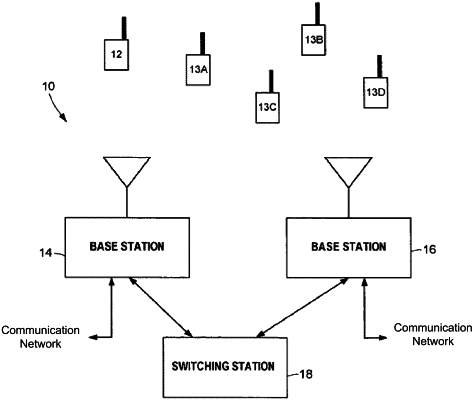| CPC H04W 72/541 (2023.01) [H04B 1/1036 (2013.01); H04B 1/709 (2013.01); H04B 1/71 (2013.01); H04B 1/7103 (2013.01); H04B 15/00 (2013.01); H04B 17/00 (2013.01); H04B 17/21 (2015.01); H04B 17/26 (2015.01); H04B 17/327 (2015.01); H04B 17/345 (2015.01); H04B 17/373 (2015.01); H04L 5/0007 (2013.01); H04L 5/0026 (2013.01); H04L 5/0032 (2013.01); H04L 5/0073 (2013.01); H04L 41/069 (2013.01); H04W 4/02 (2013.01); H04W 4/023 (2013.01); H04W 4/029 (2018.02); H04W 16/28 (2013.01); H04W 24/02 (2013.01); H04W 24/08 (2013.01); H04W 24/10 (2013.01); H04W 28/0236 (2013.01); H04W 28/04 (2013.01); H04W 40/16 (2013.01); H04W 52/04 (2013.01); H04W 52/14 (2013.01); H04W 52/243 (2013.01); H04W 64/00 (2013.01); H04W 64/006 (2013.01); H04W 72/0446 (2013.01); H04W 72/0453 (2013.01); H04W 72/52 (2023.01); H04W 72/54 (2023.01); H04W 72/542 (2023.01); H04B 7/2634 (2013.01); H04B 2201/709709 (2013.01); H04B 2201/709745 (2013.01); H04J 11/0066 (2013.01); H04L 5/006 (2013.01)] | 20 Claims |

|
1. A method, comprising:
receiving, by a processing system comprising a processor, signals associated with a plurality of communication devices communicating via a plurality of wireless uplink channels with a base station associated with the processing system, wherein the signals are received via a common public radio interface (CPRI);
detecting, by the processing system, a first interferer of a plurality of interferers based on a correlation analysis of the first interferer and at least one adaptive threshold, wherein the first interferer causes a recurring interference with at least one of the signals, wherein the at least one adaptive threshold is calculated from a baseline average signal strength across the plurality of wireless uplink channels without a predetermined number of wireless uplink channels having a highest average signal strength of the plurality of wireless uplink channels, wherein the at least one adaptive threshold is calculated by adding an offset to the baseline average signal strength, wherein the offset is determined based on measurements collected from multiple base stations, wherein the predetermined number of wireless uplink channels is determined based on the measurements collected from the multiple base stations, and wherein the first interferer comprises intermodulation interference; and
identifying, by the processing system, a source for the first interferer based on information obtained from the correlation analysis of the first interferer, wherein the source comprises one or more other transmitters, one or more faulty components, or both.
|